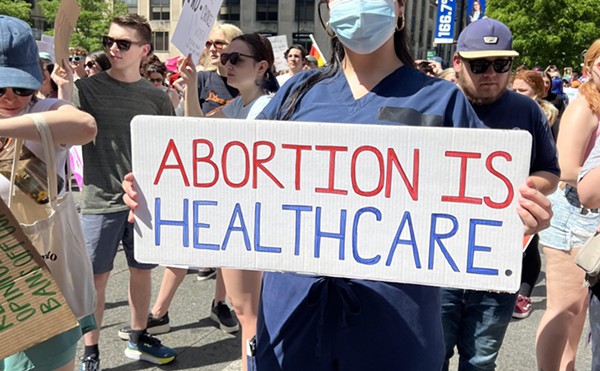Carolyn Pettis knows there are some people who see her only as a drain on their taxpayer money. She at least wants them to understand how much more taxpayer money it will take to support her if she goes blind.
Pettis suffers from both diabetes and asthma, which have prevented her from holding a steady job for the past two decades. Either she couldn't take insulin needles into workplaces, her frequent visits to the doctor to check her blood sugar aggravated her employers or dusty work conditions aggravated her asthma.
She says the cycle got so bad, "the doctor told me it's best for me not to work."
Through the assistance of Supplemental Security Income (SSI) and the Section 8 housing program, Pettis manages to live on $579 a month. Until now, she's been lucky enough that Medicaid also covers her eye exams and dental checkups.
But the 2006-07 state budget recently proposed by Ohio Gov. Bob Taft entirely cut dental and vision benefits for adult, Medicaid-dependent Ohioans such as Pettis.
Before passing the budget on to the Ohio House of Representatives, the state Senate restored all vision and part of the dental coverage, according to Lynn Williams, Ohio Empowerment Coalition organizer for the Contact Center.
But unless the Senate further amends Taft's cuts, those who rely on Medicaid can have a rotten tooth pulled but still can't get a cavity filled.
Good dental health is much more than cosmetic: Bad teeth and gums are linked to coronary disease. Pettis' own mother suffered a stroke that began with infected gums.
But health risks aside, "your appearance, whether we like to admit it or not, is very important in our society," Williams says. "If you have no teeth, you're less likely to get hired by an employer."
Because Taft's budget also gives tax breaks for the top 1 percent, such cuts just don't back up claims by Ohio leaders that they want people on state assistance to be working, she says.
Nor will Ohio seem serious about supporting its workers if the General Assembly OKs Taft's proposed reduction of parent coverage. Right now working parents earning 90 percent of poverty level — i.e., supporting a three-person household on less than $16,090 per year — are eligible for health care coverage. Taft's budget requires that a family's poverty level hit 100 percent before adults receive health care.
It doesn't make sense to Pettis.
"We need to keep healthy parents who are going to take good care of the children," she says.
Taft's budget also completely eliminates the state's Disability Medical Assistance (DMA) program, which helps destitute adults without dependent children get the medication they need to treat life-threatening illnesses.
DMA is a stopgap measure for very sick people making $115 or less per month while they wait for federal assistance to come through. That can sometimes take two years or more.
"It's the last safety net for those who would be literally dying," Williams says.
The Ohio Family Coverage Coalition of statewide healthcare agencies joins the Ohio Empowerment Coalition and the Contact Center in begging the state to find another way to balance its budget.
They point out that these cuts only earn back $250 million toward Taft's $51 billion budget. But if it's either cut programs for the state's poorest and sickest or raise revenue, why not raise the tax on a pack of cigarettes 75 cents? That would earn Ohio $525 million, enough to leave the medical programs intact and have a few million to spare.
Pettis and many others have converged on Columbus to testify before the state Senate; now they'll start hitting up the House. But even if they somehow manage to save these threatened programs, there's a long, long way to go.
"There are thousands of people out there who do not have health care — period," Williams says.
All The News That Fits: Leads, entrails and tales we couldn't get to.





